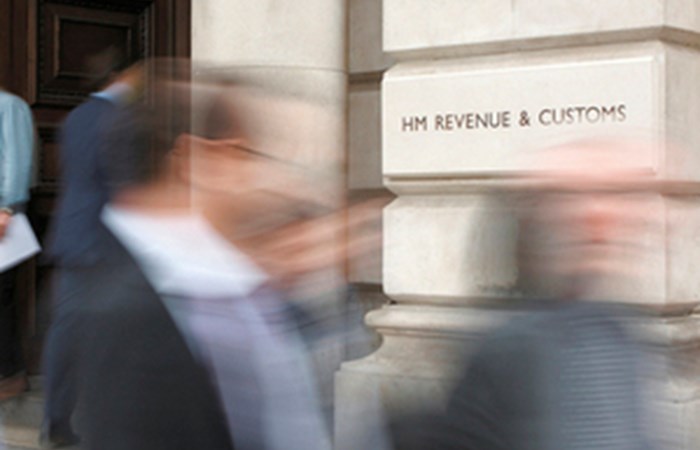HM Revenue and Customs

The Scottish rate of Income Tax was introduced in the Scotland Act 2012.
Depending on the level the Scottish Parliament sets the rate at Scottish taxpayers may pay a different rate of Income Tax to the rest of the UK.
Some of the Income Tax collected under the Scottish rate will fund the Scottish government and the rest will fund the UK government.
The Scottish rate of Income Tax doesnt apply to income from savings such as building society interest or income from dividends. This rate will stay the same for all taxpayers across the UK.
The Scottish government is expected to announce the proposed Scottish rate of Income Tax for the tax year 2016 to 2017 in its 2015 draft budget.
HM Revenue and Customs (HMRC) will collect the Scottish rate of Income Tax on behalf of the Scottish government.
National Insurance contributions are unaffected by the introduction of the Scottish rate of Income Tax.
Identifying Scottish taxpayers
Its where you live, not where you work, that decides whether youre a Scottish taxpayer.
If you live in one place during a tax year, and its in Scotland, youll be a Scottish taxpayer. If you live anywhere else you wont be.
If you move to or from Scotland, have more than one home, or dont have a home, youll need to work out if youre a Scottish taxpayer.
You can only be a Scottish taxpayer if youre resident in the UK for tax purposes.
HMRC will contact potential Scottish taxpayers before April 2016. If the address HMRC holds for you is in Scotland youll be classed as a Scottish taxpayer. Its your responsibility (not your employers) to notify HMRC if you change your address.
Your April 2016 tax code will begin with the letter S to show youre a Scottish taxpayer.
If you pay your Income Tax through your wages HMRC will advise your employer to treat you as a Scottish taxpayer so you dont need to do anything.
Employers and Pension Providers
HM Revenue and Customs (HMRC) will identify wholl be a Scottish taxpayer. Employers and pension providers dont need to decide this and should only use a Scottish tax code if HMRC tell them to.
You wont need to change how you report or make payments for Income Tax to HMRC other than to apply the Scottish rate of Income Tax code to your Scottish taxpayer employees.
PAYE forms and payslips
You wont need to show the Scottish rate separately on the P60 or payslips but they should show a Scottish tax code.
If youre given a P45 with a Scottish tax code follow the current process. If a new starter doesnt give you a P45, or youre unsure which tax code to use, use the rest of the UK tax code and rate. HMRC will tell you if you need to change the tax code.
Forms P6 and P9 will be amended to show the correct tax code for UK and Scottish taxpayers.
Calculations
The current process for week 1/month 1 wont change and HMRC will tell you which tax code to use. Apply the code to their income for the year to date. Any resulting under or overpayments will usually be corrected in-year.
From 6 April 2015, the 50% overriding limit for PAYE deductions will apply to both UK and to Scottish rate tax calculations.
Scottish tax tables will be provided for Scottish tax codes.
Employee changes address
If an employee changes their address in year, HMRC will reassess their taxpayer status and reconcile their tax using the current processes.
Make sure your employees know they need to tell HMRC if they change their address, to ensure that theyre given the correct tax code.
PAYE Settlement Agreements (PSA)
From tax year 2016 to 2017 youll need to account for both UK and Scottish rates of Income Tax for a PSA. The relevant forms and guidance will be updated nearer the time. Youll need to use the relevant tax rates (UK or Scottish) to work out the correct tax due.
Pension schemes operating PAYE
As a PAYE operator, youll know if the scheme member is a Scottish taxpayer by the tax code provided on the P6. Youll need to adjust your IT systems to collect the correct amount.
Pension Relief at Source (RAS)
The UK government has agreed that registered pension scheme administrators and pension providers have until April 2018 to put in place the changes necessary to their IT systems that will allow them to claim Relief at Source (RAS) at the correct rate.
Until then all RAS claims will be made at the UK basic rate. Any adjustments that might be needed will be made by HMRC through Self Assessment or through PAYE coding.
Pension schemes operating net pay
If youre operating a net pay arrangement pension scheme youll deduct pension contributions from your employees gross pay giving them full relief at the appropriate Income Tax rate.
Software developers
Guidance for software developers including calculations and test data for the Scottish rate of Income tax.
More information
This page will be updated with further information as it becomes available.
Find out more about the Scottish rate of Income Tax and who it applies to.
The June 2015 edition of the Employer Bulletin contains more information on the Scottish rate of Income Tax.
